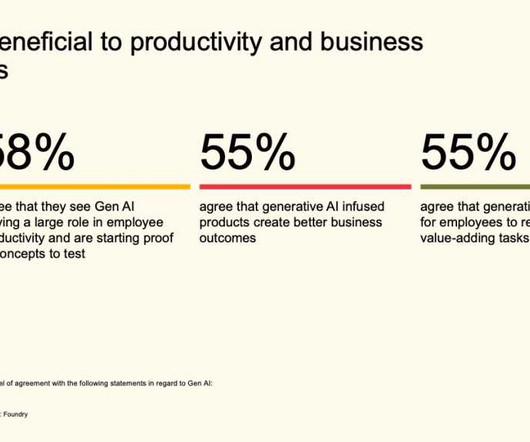How to create a culture of innovation
CIO Business Intelligence
SEPTEMBER 12, 2022
Prioritize time for experimentation. It requires bold bets and a willingness to persevere despite setbacks, criticism, and uncertainty,’’ wrote McKinsey senior partners Laura Furstenthal and Erik Roth in a recent blog post. “By Here, they and others share seven ways to create and nurture a culture of innovation.














Let's personalize your content